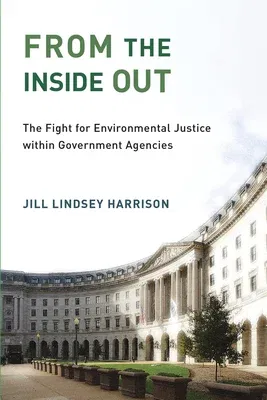An examination of why government agencies allow environmental
injustices to persist.
Many state and federal environmental agencies have put in place
programs, policies, and practices to redress environmental injustices,
and yet these efforts fall short of meeting the principles that
environmental justice activists have fought for. In From the Inside
Out, Jill Lindsey Harrison offers an account of the bureaucratic
culture that hinders regulatory agencies' attempts to reduce
environmental injustices.
It is now widely accepted that America's poorest communities,
communities of color, and Native American communities suffer
disproportionate harm from environmental hazards, with higher exposure
to pollution and higher incidence of lead poisoning, cancer, asthma, and
other diseases linked to environmental ills. And yet, Harrison reports,
some regulatory staff view these problems as beyond their agencies' area
of concern, requiring too many resources, or see neutrality as demanding
"color-blind" administration. Drawing on more than 160 interviews (with
interviewees including 89 current or former agency staff members and
more than 50 environmental justice activists and others who interact
with regulatory agencies) and more than 50 hours of participant
observation of agency meetings (both open- and closed-door), Harrison
offers a unique account of how bureaucrats resist, undermine, and
disparage environmental justice reform--and how environmental justice
reformers within the agencies fight back by trying to change regulatory
practice and culture from the inside out. Harrison argues that equity,
not just aggregated overall improvement, should be a metric for
evaluating environmental regulation.

